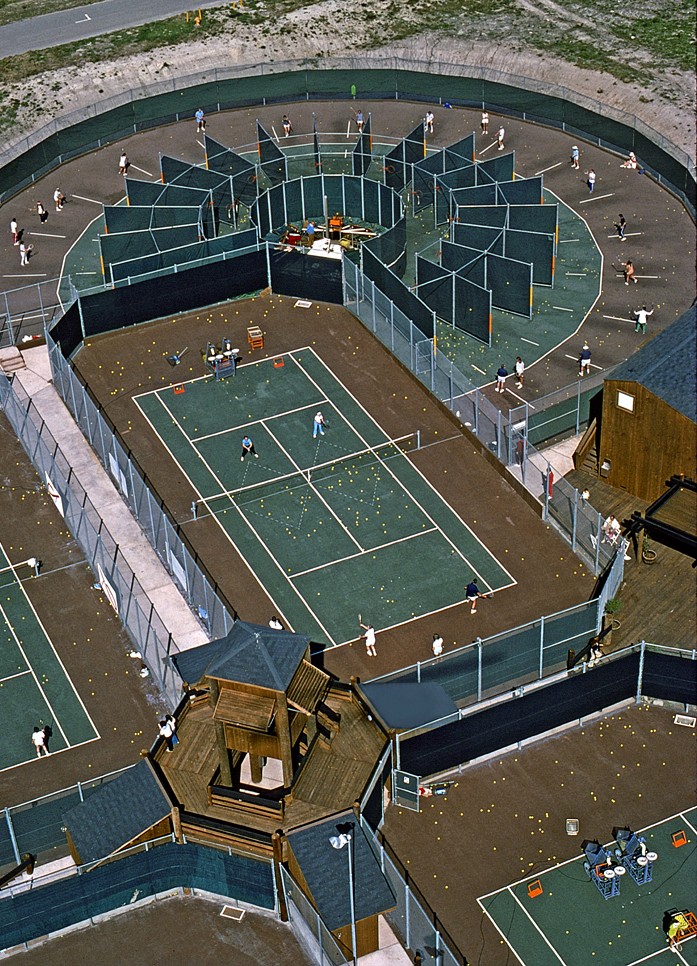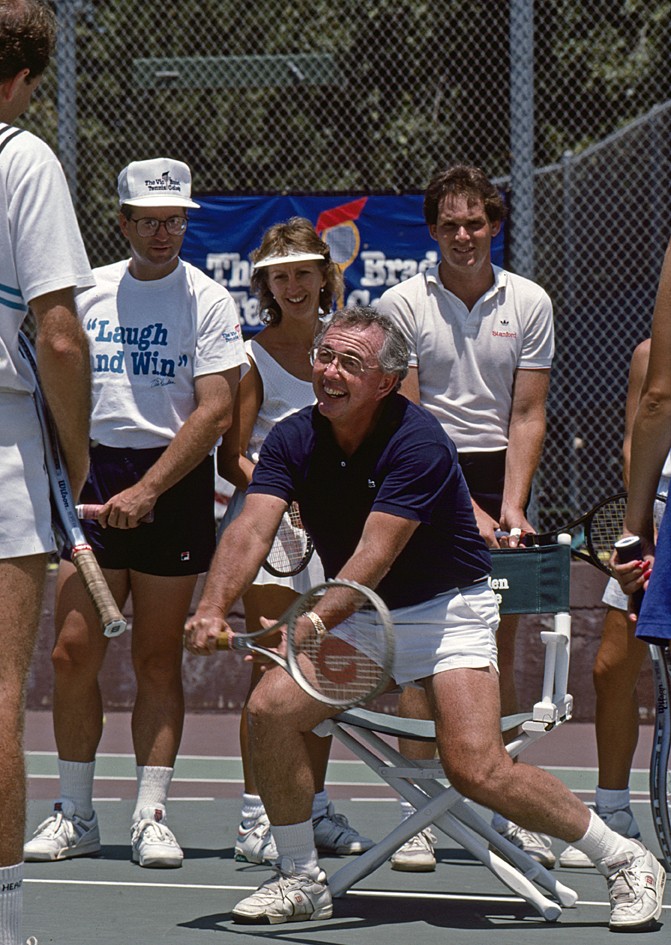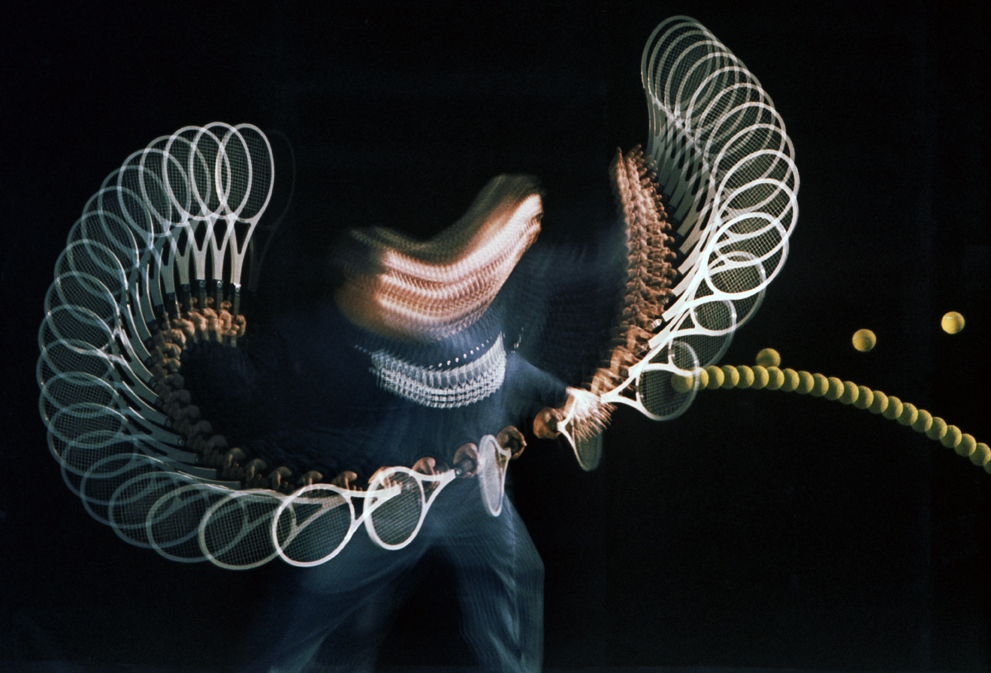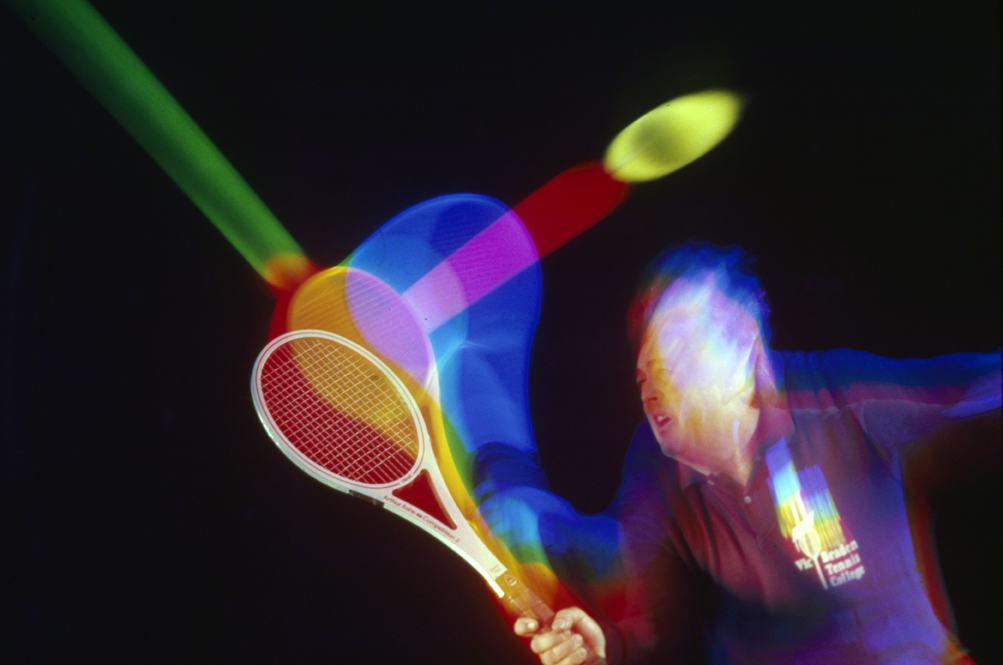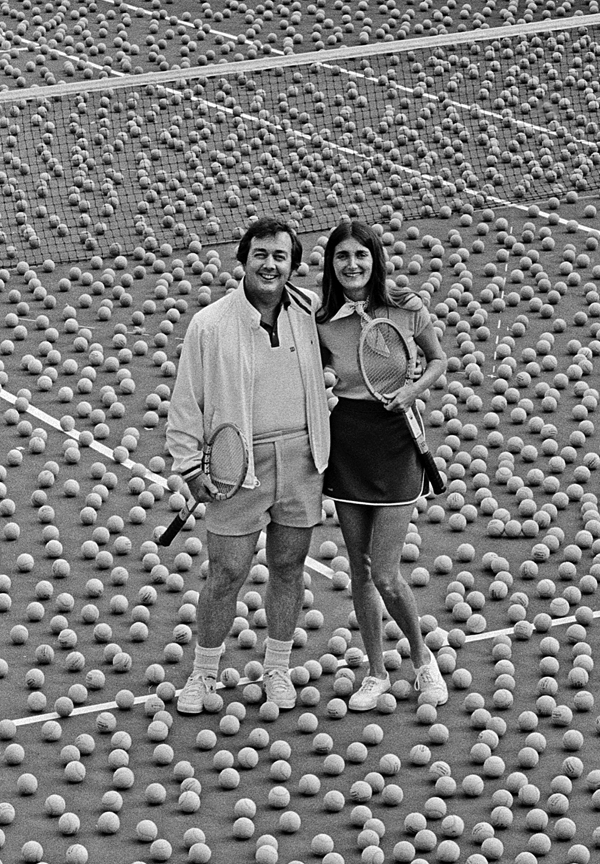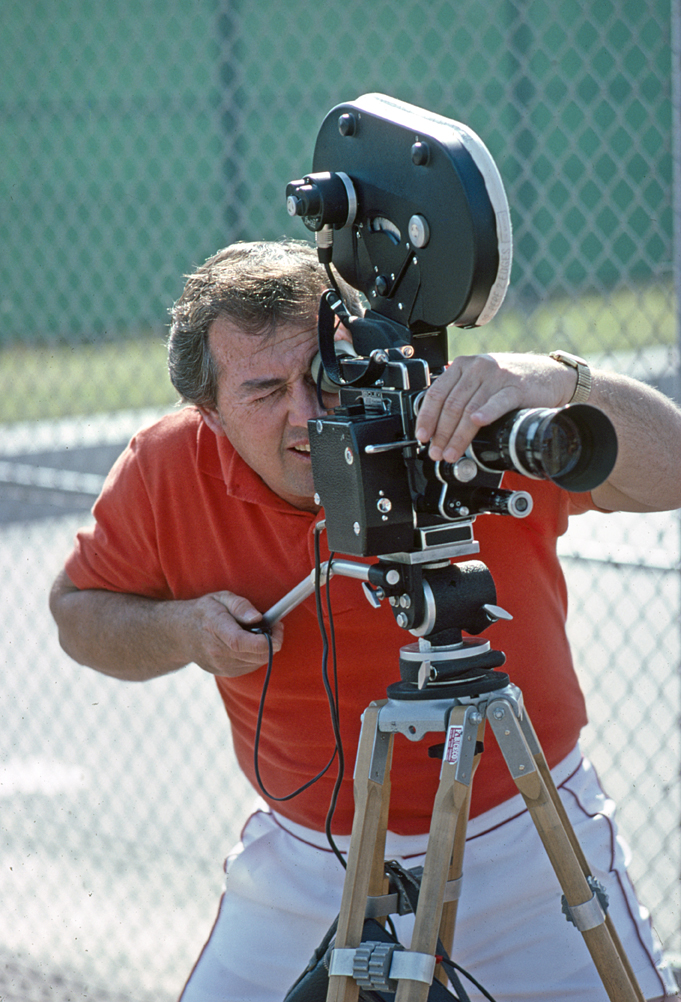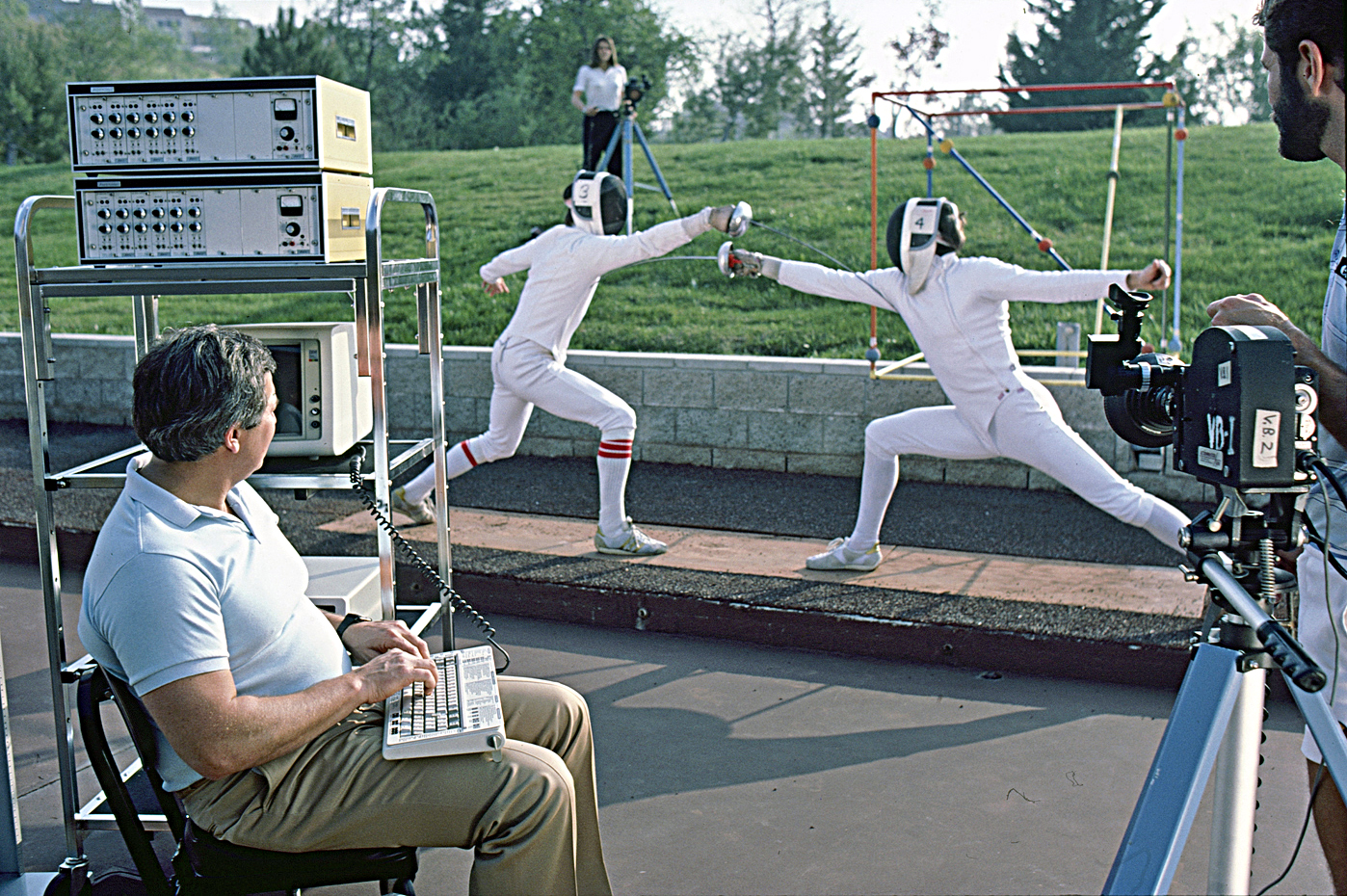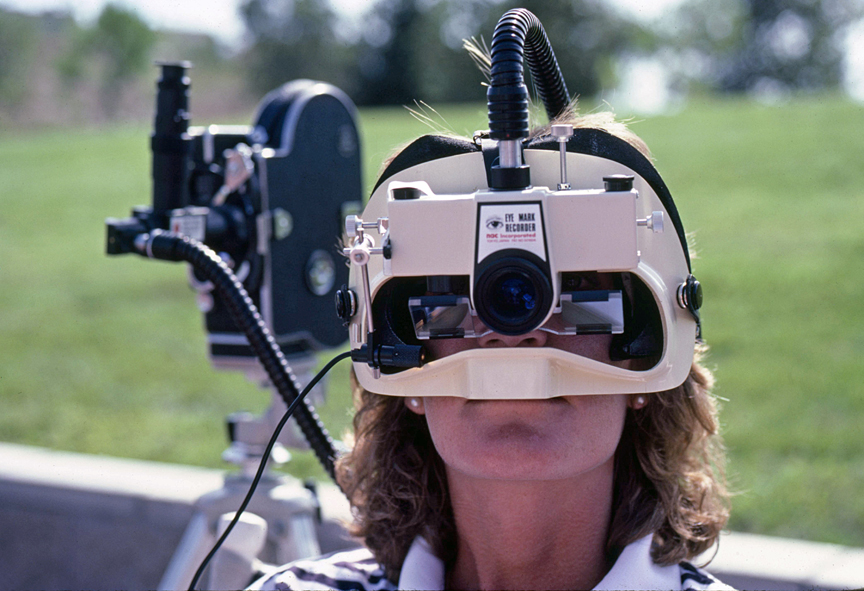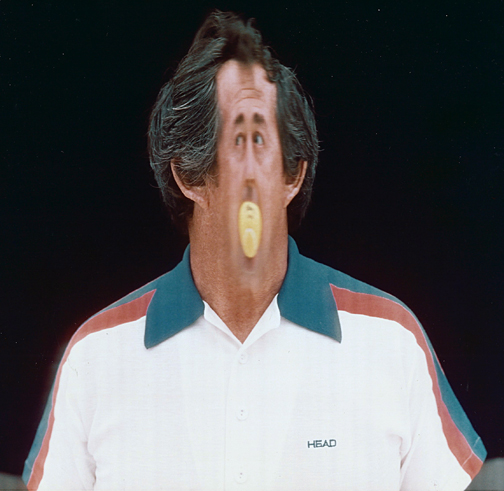John first met Vic Braden in 1972 while photographing America’s tennis boom for LIFE. He photographed Vic numerous times over the years as Vic taught tennis to millions, published instructional books and produced a PBS television series. With John’s love of tennis and Vic’s passion for photography, the two became good friends.
John’s portrait of Vic overlooking the Vic Braden Tennis College (VBTC) at Coto de Caza, 60 miles south of Los Angeles, was shot for TIME in 1989 (below).
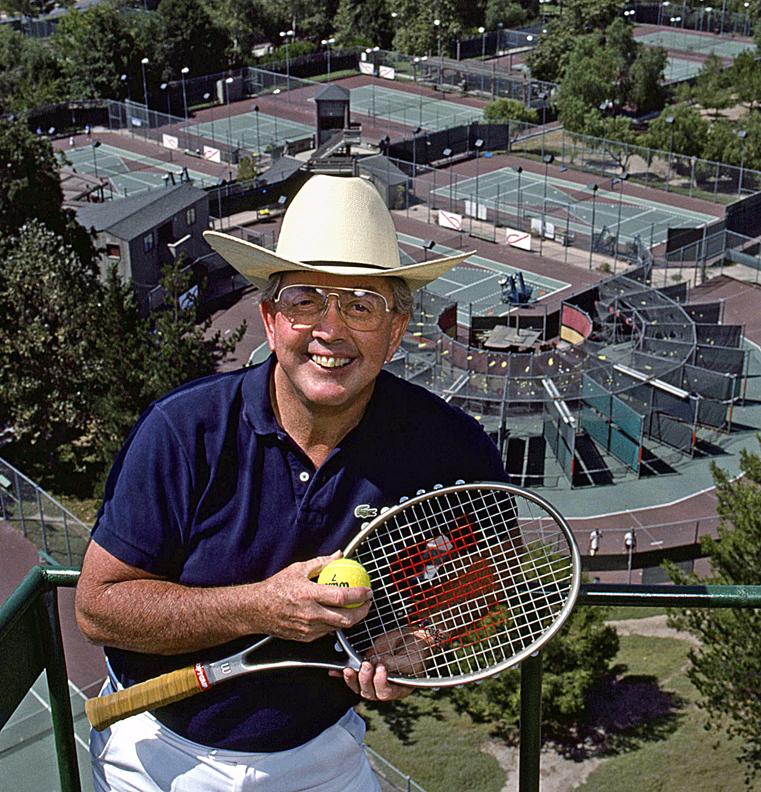 All photos © John G. Zimmerman Archive
All photos © John G. Zimmerman Archive
The VBTC featured 17 teaching lanes designed by Vic to replicate the geometric restrictions of a tennis court. The instruction courts were also specially designed by Vic with defined target areas, a patented ball collection system and ball machines adapted from JUGS baseball pitching machines that delivered 900 balls per hour (below).
Humor was integral to Vic’s teaching. A licensed psychologist who had worked in the Los Angeles school system, Vic knew the power of laughter to relieve anxiety and engage his students. “Laugh and Win” was among his popular phrases and exemplified his desire to make learning fun. Below he uses a chair to show how much the knees should bend on backhand groundstrokes.
Vic Braden’s Tennis for the Future (1976) was the best known of his many instructional books. It debunked myths about the sport’s fundamentals through scientific research, much of which Vic conducted himself. He hired John to shoot special effects photography for the project.
John used his Hulcher high speed camera to capture the path of Vic’s groundstrokes (below), volleys and serves for the book. The basics that Vic offered in that seminal book, his emphasis on research-backed and data-driven instruction have had a profound effect on the game as well as other sports instruction.
John also outfitted his Hulcher with a color filter to capture the geometry of the ball’s trajectory, visually conveying Vic’s focus on the scientific underpinnings of the sport.
At the heart of Vic’s life and work was wife Melody, shown at left in a 1975 portrait for PEOPLE magazine. Although the tennis balls look random, it took John and his assistants several hours to carefully arrange them to fill every inch of the frame. To hear Vic’s recollection of how this photo was made and what it was like to work with John, click here.
The multifaceted Braden was a skilled broadcaster for major television networks (ESPN clip here) as well as an accomplished cinematographer who used high-speed cameras for his computer research. In addition, Vic was a passionate tennis historian, collecting ephemera from the pre-Open Era and conducting interviews with many legendary players. His massive archive of audio/visual material, collected and preserved over 60 years, was recently acquired by the Tennis Channel, which drew on the historic treasure trove to produce a terrific short video about Vic and his legacy.
In 1980, Vic realized his lifelong dream to establish a sports science research center. The $1.2 million Coto Research Center (CRC) was described by Discover magazine as ”what may be the most advanced technological sports complex in the world.”
John photographed Vic and CRC’s Co-founder, Dr. Gideon Ariel, a computer biomechanist and former Olympic athlete, for LIFE magazine in 1984 (above). One of CRC’s most impressive achievements was its part in training the U.S. Women’s Volleyball Team that won a silver medal at the 1984 Olympics.
The USTA Umpires Committee asked Vic to research the controversial subject of line calls in 1982. His study, conducted at the CRC using the Eye Mark Recorder (R), helped spur the development of electronic line calling, a system that is an integral part of professional tennis today.
John and Vic stayed in touch after John’s retirement in 1990. When John turned 70, Vic and Melody arrived at his surprise birthday party with a surprise of their own; a video camera to document the evening! They videotaped the festivities, interviewed numerous guests and produced a humorous and engaging tribute to John. Photographers Neil Leifer, Walter Iooss, Heinz Kluetmeier and Johnny Dominis were among the guests interviewed, and as the champagne flowed, so did their stories about John. These interviews have been digitized and are part of the JGZ archive’s audio visual collection.
Fuzz Sandwich
One of a series of funny pictures that John shot with his Hulcher for VB’s Tennis for the Future (1976).
Vic’s pioneering contributions to the tennis world earned him a well-deserved induction into the International Tennis Hall of Fame in 2017. Fittingly, one of John’s portraits of Vic is included in the permanent display.
Linda Zimmerman & Mike McLaughlin

